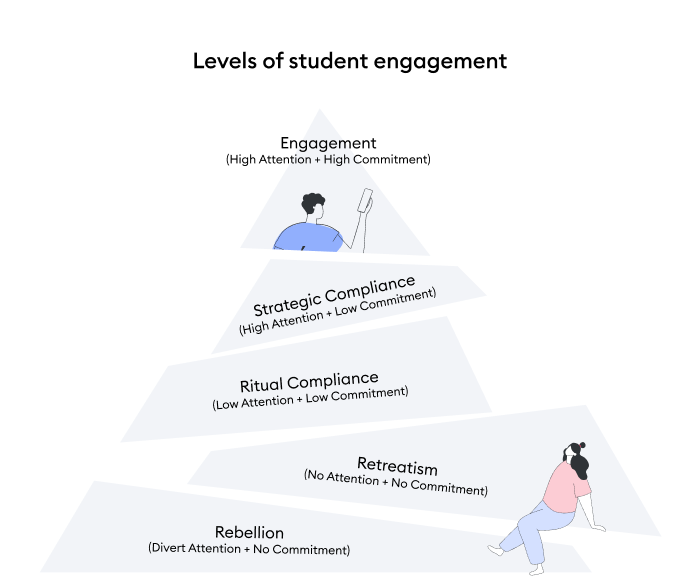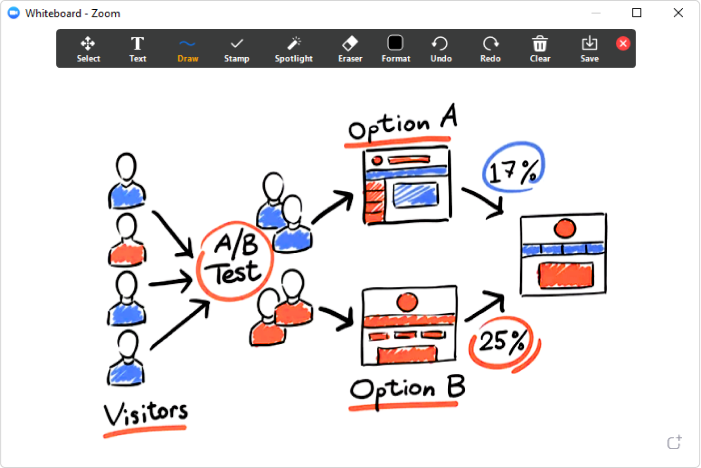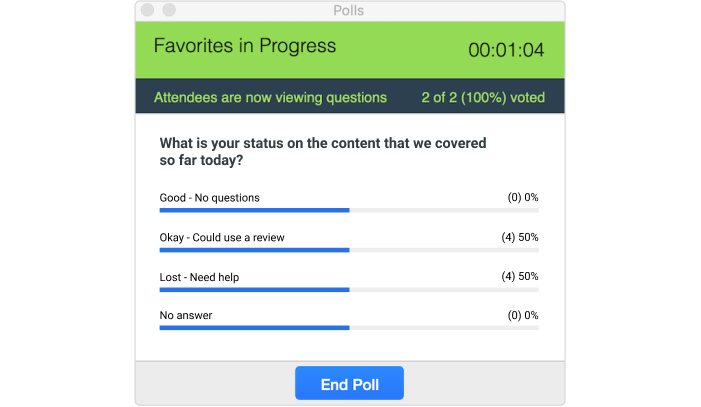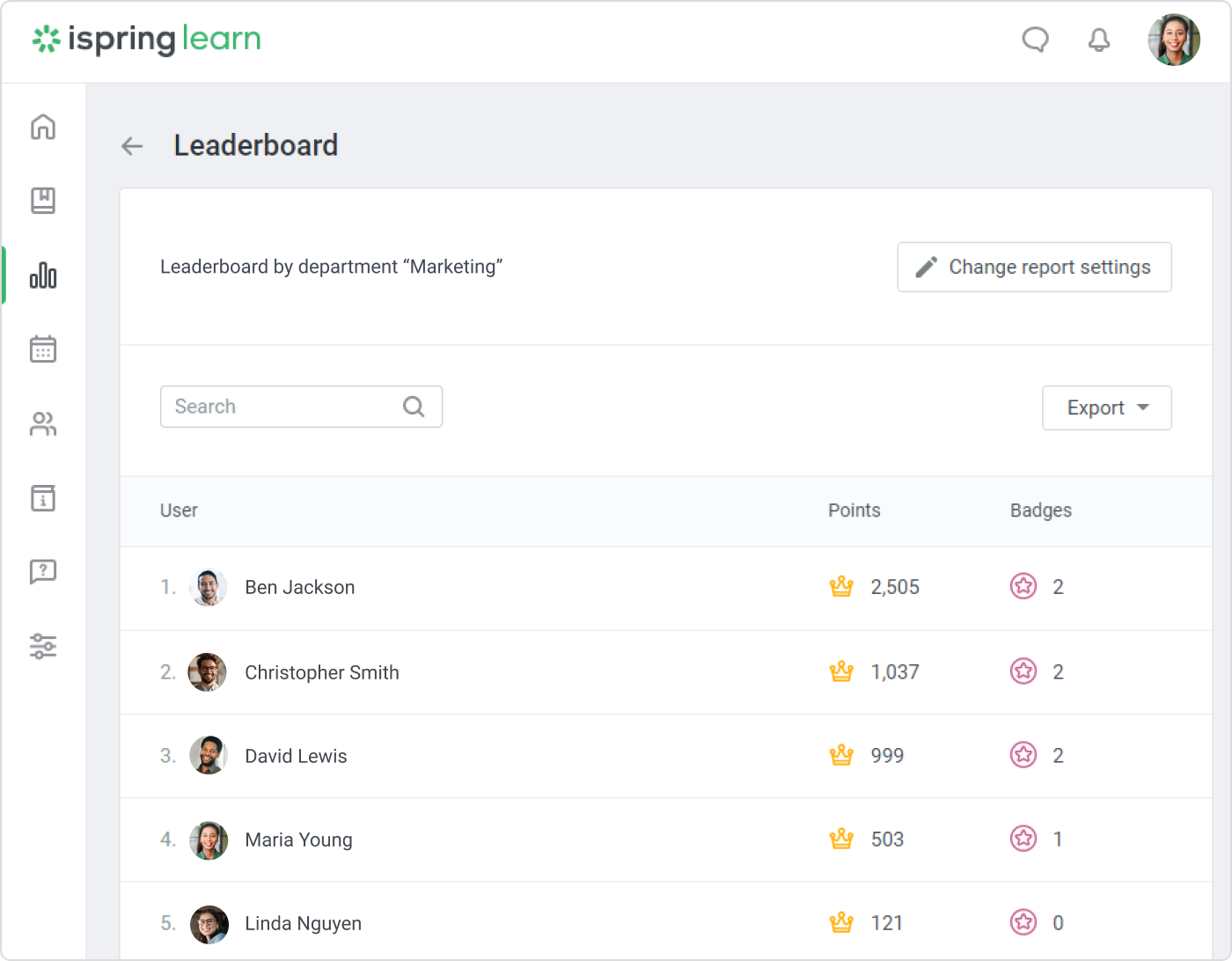How to Increase Student Engagement in Online Learning

So, your classes are now online, but you need to keep your students in line. But a disciplinary approach is no longer an option, as they can tune you out quicker than you can say Netflix. The key, then, is to enhance student engagement in your online learning. And that’s just what this article is about. Let’s keep your students on the edge of their seat/couch/bed… or wherever they happen to be during class.
Stay tuned as we ‘Zoom’ the (class)room.
What Is Engagement?
Merriam-Webster’s defines engagement as “the act of engaging: the state of being engaged,” which, in turn, is defined as being “greatly interested.”
In the context of education, engagement can be defined as a measure of a student’s participation in the learning process. This includes their interaction and cooperation with the teacher and classmates.
In short, the level of student engagement is a good measure of the likelihood that a learning experience will be successful.
Why Is Student Engagement so Important for the Learning Process?
Engagement is what makes anything in life memorable. Pick any memory and it’s there in your head because you were engaged at that moment. Education is no exception. And therein lies the challenge – especially with online education.
“Turn on, tune in, drop out.” No, we’re not alluding to Timothy Leary’s counterculture-era phrase from the 60s. We’re referring to the challenges of online education:
- Step 1. Turn on: Your students turn on their computer or mobile device in preparation for their online class.
- Step 2. Tune in: They check in to the class session, but find it to be boring.
- Step 3. Drop out: You lost ’em. Did we mention Netflix?
Your classes don’t have to be merely entertaining, but they do need to be engaging.
Low student engagement results in boredom, alienation, and consequent low achievement – and higher rates of dropout (from the class or the school). And nowhere is this truer than in remote education.
When 245 juniors and seniors in the College of Business at James Madison University were asked what they liked least about their learning experience in the classroom, the top response was “boring,” specifying:
- Not passionate
- Too much lecture
- Teaching at you instead of to you
- Reads off of PowerPoint slides
The second most frequent response was “ignoring questions.” Please don’t.
Engagement is driven through interaction. In other words: “education with participation.” If your students are going to remain engaged – especially in a remote online setting – they need to participate.
Let’s take a look at how the quality of online education is currently perceived in comparison with in-person classes.
A study was conducted in 2020 with 1,618 U.S. college students who were asked, “How would you compare the instruction of your college-level online learning experiences with your college-level classroom experiences?” Here are the results:
- 41% Better
- 38% About the same
- 15% Not as good
- 4% I have not yet enrolled in any college-level online study
- 2% I have not enrolled in any college-level online study other than my online program
The fact that 15% responded “Not as good” and 38% replied “About the same” (a full 53%) indicates that a sizeable amount of work needs to be done to engage the majority of students with online learning. This calls on us to make online learning curves into learning trajectories.
Be the change.
Main Challenges to Overcome in Online Learning
In his seminal book, Engaging Students: The Next Level of Working on the Work, the late Phil Shlechty, a prominent national educator and founder and CEO of the nonprofit Schlechty Center for Leadership in School Reform, delineates five levels of student engagement:

While a teacher might get away with a considerable concentration at the first three levels when conducting in-person education with a roomful participants, and convince themself that they’re getting results, online education makes it even more difficult to maintain a critical mass at the level of engagement – especially in higher education. If people’s online profiles can be augmented/enhanced/tweaked to their liking and we measure our happiness by the numbers of “likes” we receive, then online engagement is also fairly easy to fake.
So, let’s handle that right now.
It takes two to ‘tangle.’ By this, we mean there are online vicissitudes that need to be addressed and resolved at the two ends – those that both the educator and the educatee encounter.
Teach for engagement and retention will follow.
Pique students’ interest in order to foster ‘peak’ experiences. As previously mentioned, we all know that the moments in our life that live on in our memory are those during which we were extremely engaged – for whatever reason. Being a ‘professor of poignancies’ will help to ensure that your students become and remain avid to participate in your insights together with their peers.
Given the current necessity for remote learning, you’ve probably noticed that some of the highest hurdles to be leaped over are lack of preparation and class time distractions. Here are a few of those factors which, if not handled, pose certain death to student engagement.
Preparation:
- Know your hardware and software – assume anything that can go wrong might. If you’re suddenly offline, you’re out of luck and class is over.
- Perform dry runs before class – same reason.
- Send your students message updates a few days, a few hours, and a few minutes before class.
- Have a tech specialist riding shotgun during class, if possible, to make sure everyone can get and stay online for the duration of the class (don’t assume that participants are tech wunderkinds).
- Pay attention to the quality of the sound and lighting: high-quality audio, clear image and sensible framing, strong lighting (avoid shadows and low light), and Zoom backgrounds. How many videos have you turned off before the end due to substandard audio or image? Exactly.
Distractions:
- Have everyone (including you) silence disturbing ‘bells and whistles,’ such as pinging email inboxes and mobile phone messages from friends and peers. Better yet, close them.
- Request that participants set up a quiet, dedicated space so that class time is quality time – no background pets, kids, TVs, or surprise visits.
Rules:
- Ask students to mute their mics when they’re not needed.
- Everyone uses a headset to prevent echo.
- Use the hand raise function.
- Zero tolerance for bullies or showoffs.
- No arguments.
How to Increase Student Engagement via Virtual Classroom Sessions
Online classroom education is that which is conducted in real-time in a virtual classroom with the help of web conferencing tools like Zoom. This is also where it is easiest to lose a student’s interest. Talking heads are a thing of the past. Make sure that real-time doesn’t become “surreal-time.” Zoom and other services can keep you connected, but can also result in a virtual classroom full of “Zoombies.” Here are some suggestions for your teacher-led class time:
Explain. Consider that your class might be the first online classroom experience for some of your students. In order to set participants up for success, explain how it all works – before the first class is held. You might want to create an introductory video and make sure all the students have access to the necessary hardware and software.
Intros. Introduce yourself at the beginning of the class and have everyone (briefly) present themselves as well – in case you are beginning with a new group of peers.
Requirement. Design lessons or activities that require engagement and participation. One of the key ways to do this is to have lessons that utilize a lot of interaction.
Formats. Communicate in multiple formats and mix things up with multimedia like PPT presentations, videos, infographics, quizzes, branching scenarios, infographics, whiteboard animations, and screencasts. We all like colorful, shiny, moving objects, and images and videos can take you to the bottom of the ocean or send you blasting through outer space.
Whiteboard. Web conferencing tools typically have built-in whiteboards. This instructional feature provides an option for collaboration. Students can view and annotate right on the board. Once the lesson has been completed, you can save the whiteboard (usually as an image or PDF) for later reference and share it with your learners.

An interactive whiteboard on Zoom
Input. Get the students’ input in the form of polls/surveys and discussions. Everybody has an opinion and we all love to voice it. In fact, a good way to start a class is by conducting a relevant poll/survey. Polls make it easy for you to measure students’ engagement and results.

Interactive polls in Zoom
Stimulus. Keep in mind that an online class doesn’t allow the stimulus and connection of seeing a person in the front of a physical classroom with their accompanying movements, gestures, looks, and surprises (like dropping a ruler ‘accidentally on purpose’). And since we now live in a multi-stimulus-mode reality, an online class needs to follow suit.
Hands up. So, encourage the students to use the questions tool and the raise hand tool to stay connected with the group.
Feedback. Zoom also offers several other nonverbal feedback options that can keep students engaged – in a mannerly fashion. They include: Yes / No, Go slower / go faster, Thumbs up or down, Applause, Coffee (break time), and Clock (enough already!)

Feedback features in Zoom
Duration. Given the contemporary human’s ever-shortening attention span, shorter classes are probably going to prove more effective – 20 minutes three times a week or 30 minutes twice a week, versus a single one-hour class.
Breakout. Use brief breakout sessions – and require a summarized report on the achievements that were realized during the sessions. The teamwork required with breakout groups is a great way to engage your students.
Lecture. Don’t lecture too much (please) – it’s not interactive. Also, avoid filling class time by reading from PowerPoint slides.
It will take more than having a Zoom account and letting the teaching take its course to make online education work.
In fact, it is pertinent to mention here that many educators are adopting the “flipped classroom,” which can be defined as “an instructional strategy and a type of blended learning, which aims to increase student engagement and learning by having students complete readings at their home and work on live problem-solving during class time.” And this very much applies to remote education. In the abovementioned research conducted at James Madison University, “Many students listed their favorite parts of the classroom as instructors who were engaging and held interactive class sessions.”
Here are some more details on how to set up an engaging virtual classroom.
How to Increase Student Engagement via Online Courses
Asynchronous courses and assignments pose an even greater challenge for student education, as there is no teacher/mentor or peers to interact with and form a (supportive) “learning herd” with. Here are some suggestions that can help you “amp your camp.”
Check out this infographic for brief information or continue reading for details about how you can boost learners’ engagement with eLearning courses.
Interactive courses. You can create courses on your own, using the iSpring Suite authoring toolkit, for example. This makes it easy to create engaging courses because: 1) you can include different types of content such as slides, video lectures, quizzes, dialogue simulations, screencasts, and interactions; 2) it provides resources such as templates created with instructional design principles in mind and photos that give courses a professional look. All of these factors – the colorful, shiny, moving objects we referred to earlier – serve to attract attention, which is the name of the game here.
Take a look at this course demo created with iSpring Suite.
Quizzes. Mini-quizzes (non-graded ones) during the class on the material that has just been covered will help you not only boost students’ engagement but also increase retention of the new information. And longer graded tests (after completing a module or an entire course) will let you assess how much of the content your students truly learned (retained).
As mentioned, it’s easy to build quizzes in iSpring Suite. With the popular multiple-choice, drag-and-drop, and matching activities, among a total of 14 question types, creating engaging knowledge checks for your students is a breeze. To create cheat-proof tests, you can randomize questions and answers, specify the number of attempts allowed, and set scoring rules.
Feedback. Timely feedback is essential. Make sure all students have all test/quiz results/assessments and replies to any queries that have been made prior to the next class session. If this does not happen, a student can easily get the sense that the teacher doesn’t care, and their morale can quickly take a nosedive.
Also read → Assessment in online learning
Social. Consider setting up a group on social media. Recent research shows that students who feel connected to their classmates are more engaged. This can serve the dual purpose of building a sense of classroom community and allowing the teacher to maintain a sense of the group’s esprit de corps.
Gamification. If you use a learning management system (LMS) for delivering courses, chances are it has a gamification feature. Consider awarding points and badges when students complete their assignments, and use leaderboards to involve them in healthy competition. Plus, generally acknowledge an individual student’s achievements and encourage continued engagement – but without making underachieving classmates feel invalidated.

Leaderboards in iSpring LMS
Certificates. Beyond points and cute badges, digital certificates are easy to create and provide students with a sense of real achievement. Many LMSs allow you to award your students with a certificate automatically when they complete a course.

An example of a certificate of completion for a project assigned in iSpring LMS
Mobile. According to statistics, 67% of U.S. college students used mobile devices to complete course-related activities in 2019. By the time you read this, the ‘urge to merge’ education with mobile might very well be close to or above ninety percent.
So, when creating online courses, keep in mind that they should look and play well on any device. If you develop the content on your own, consider choosing an authoring tool that lets you build mobile-responsive courses that adapt automatically to every smartphone and tablet, and every orientation. This where iSpring Suite can be a good fit again.
Drive. Test drive any between-class materials in the role of a student to make sure that they all work flawlessly.
Tips for Increasing Student Engagement
Following the constructivist model of education, online educators are advised to be more ‘facilitators’ than the ‘presenters’ that they used to be in a physical classroom – transitioning from a “sage on the stage” to a “guide on the side.” Understanding this will naturally promote greater engagement.
Democratization. Give the students voice and choice in what and how they learn and demonstrate learning, to the degree that this is possible. We understand that a curriculum needs to be followed, but participation, and its corollary of engagement, is the name of the game here – right? Ask them what is working and what is not.
Presence when not present. Be there for the students outside of class time. We don’t mean to say that you need to be on call 24/7, but questions will come up between classes that might be tech related or content related. Responding to students’ requests when they reach out allows them to feel that you care and allows you to keep your finger on the pulse of how the individuals in the group are coming along. You might want to consider establishing online office hours. Timely responses and availability also engender greater engagement in the course’s content and trajectory.
Active learning. Assign the students group projects, like interviewing people in their community on a course-related topic, which gives the content even greater relevance.
Organization. “Take nothing for granted, leave nothing to chance.” Make sure that everything you need is right at hand. No disappearing acts during a live Zoom session to go fetch a paper, please.
FAQ – Glad You Asked
Will things ever go back to the way they used to be?
Probably not, and that’s a good thing. As humans, we need to evolve – and this is a natural evolutionary step. Consider this an opportunity to broaden and enhance your capacity to engage your students.
Can’t I automate everything and just monitor the students’ progress?
No! As it is common knowledge that humans are ‘social animals,’ we have a need to interact and engage. Teachers are an essential factor for students’ academic success. We mentioned that a teacher becomes more like a facilitator when teaching online. The ideal is for this facilitator to go a step further and serve as a mentor.
Can I use one approach for all students?
Consider that different individuals learn better through different input methods. According to Rasool Somji, there are eight types of learners, according to their learning style:
- Visual learners
- Aural learners
- Verbal learners
- Social learners
- Logical learners
- Physical and tactile learners
- Solitary learners
- Naturalist learners
See how you can tailor your material to suit your students’ needs to provide the modality that will ensure effective engagement.
I’m comfortable teaching at the front of a physical classroom, but am clumsy and uncomfortable with online teaching. How can I overcome that?
Practice, practice, practice. You also might be able to merge the two modalities more comfortably when the online classes are interspersed with in-person classroom sessions.
Final Thoughts
As you can see, there’s no need to be Leary [sic] of online education. Quite to the contrary, our current reality necessitates that we embrace the digital realm and use it to stay uberconnected (read ‘engaged’). Think of it as your new cyber stomping ground within the ‘superstring’y connectedness of things and we’ll master this eLearning thing — together.
So, in the words of Jean-Luc Picard: “Engage!”





